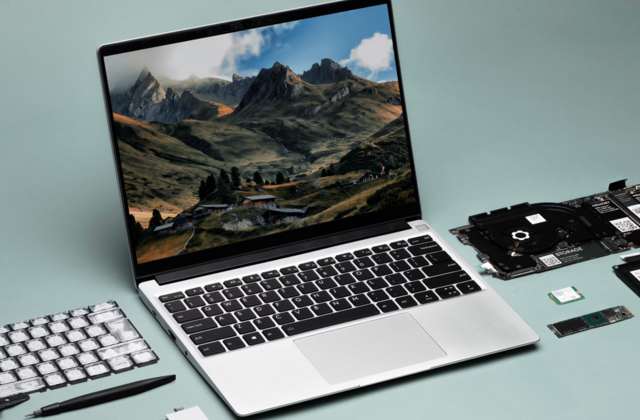Energy using appliances, Fashion, clothing and textiles, Food & beverage, Furniture, Consumer goods
What is it? The John Lewis Partnership, encompassing retailers John Lewis and Waitrose, has announced a new plan for their future sustainability work that includes circular business models, such as buy back/ take back schemes, rental and resale, as well as funding for regeneration projects in the UK and India (John Lewis Partnership, 2022a). While the business aims to offer ‘buy back’ or ‘take back’ options for all John Lewis product categories by 2025, the aim for circular business models is less defined. At the time of publication of “Our Plan for Nature” (October 2022), the John Lewis part of the company offers a rental service for women’s clothing (John Lewis, 2022c) and a take-back scheme for empty cosmetics containers, called ‘Beautycycle’ (John Lewis, 2022a).
Why is this important? Every good that is produced requires the input of precious resources, creates waste in the process and might negatively impact ecosystems. The continuous consumption and use of resources means that many societies consume resources at a quicker rate than they can be renewed by the planet. Worldwide, we produce about 300 million tons of plastic annually (NRDC, 2021) and in Europe alone, packaging represents 36% of municipal solid waste (Zero Waste Europe, 2020). The beauty industry is estimated to produce 120 billion units of packaging annually (John Lewis, 2022a), only some of which are home-recyclable.
Main resource strategy: Closing the loop through collecting difficult-to-recycle beauty packaging for correct disposal and recycling.
Other resource strategies: Regenerating the loop through funding projects on ecosystem restoration and experimenting with regenerative agriculture on the Leckford Estate farm. Slowing the loop through renting out women’s clothing.
Business model aspects:
- Value Proposition: The BEAUTYCYCLE buy-back scheme offers customers an option to trade in empty cosmetics packaging that is difficult to recycle at home.
- Value Creation & Delivery: Customers can bring in a minimum of 5 empty cosmetics containers and receive a voucher to the value of £5 in return (John Lewis, 2022a). For the clothing rental, customers can rent pieces for between 4 and 20 days. They are sent to customers by mail and returned via mail after use, to be cleaned and re-rented (John Lewis, 2022c).
- Value Capture: For the clothing rental, customers pay a fee for the rental period, depending on the item they chose and length of rent. A late return fee of £25/day is also applied (John Lewis, 2022b).
Business model experimentation practices: The John Lewis Partnership has trialled diverse circular business models. In 2018, they experimented with clothing take-back together with social enterprise Stuffstr (Smithers, 2018). In 2020, John Lewis experimented furniture rental together with Fat Llama (Osborne, 2020). The BEAUTYCYCLE take-back scheme was initiated in 2019 (John Lewis, 2022a). The company 2021/22 sustainability report states that: “There has been significant innovation in this field, including buyback, rental and repair schemes, but customer uptake remains limited” (John Lewis Partnership, 2022a) and only the BEAUTYCYCLE programme outcome is reported. Nevertheless, the 2022 “Our Plan for Nature” documents the company’s aim to “develop rental and resale opportunities, with an ambition to offer more sustainable ownership options” and that “All John Lewis product categories will have a ‘buy back’ or ‘take back’ option by 2025” (John Lewis Partnership, 2022b).
Sustainability outcomes: While most of the circularity and regeneration commitments have yet to be put into practice, the John Lewis Partnership provides numbers for its BEAUTYCYCLE programme. They estimate that, since 2019, 1.1 million packaging products have been collected through BEAUTYCYCLE and saved from landfill (John Lewis, 2022a), of which 550,000 were collected in 2021 alone (John Lewis Partnership, 2022a).
Sources:
John Lewis (2022a). BEAUTYCYCLE. Accessed 10 October 2022 at: https://www.johnlewis.com/our-services/beautycycle
John Lewis (2022b). FAQs Renting. Accessed 10 October 2022 at: https://johnlewisrental.zendesk.com/hc/en-gb/articles/9468648100625-Is-there-a-penalty-fee-for-a-late-return-
John Lewis (2022c). Rental. Accessed 10 October 2022 at: https://www.johnlewis.com/our-services/fashionrental#intcmp=ic_20221001_sustainabilityhubfashionrentalbanner_sc_wom_a_sknb_
John Lewis Partnership (2022a). Ethics & Sustainability Report 2021/22. Accessed 10 October 2022 at https://www.johnlewispartnership.co.uk/csr/reporting/progress-report.html
John Lewis Partnership (2022b). Our Plan for Nature. Accessed 10 October 2022 at https://www.johnlewispartnership.co.uk/csr/reporting/reports-policies-standards.html
NRDC (Natural Resources Defense Council) (2021). Single-Use Plastics 101. Accessed 21 September 2021 at: https://www.nrdc.org/stories/single-use-plastics-101
Osborne, H. (15.08.2020). Never knowingly under-leased – John Lewis moves to rent out its furniture. The Guardian. Accessed 10 October 2022 at https://www.theguardian.com/business/2020/aug/15/never-knowingly-under-leased-john-lewis-moves-to-rent-out-its-furniture
Smithers, R. (18.06.2018). Money for old socks: John Lewis to buy back clothes to cut waste. The Guardian. Accessed 10 October at https://www.theguardian.com/business/2018/jun/18/money-for-old-socks-john-lewis-to-buy-back-clothes-to-cut-waste
Zero Waste Europe (2020). Reusable Vs. Single Use Packaging: A Review of Environmental Impact. Accessed 21 September 2021 at: https://zerowasteeurope.eu/wp-content/uploads/2020/12/zwe_reloop_report_reusable-vs-single-use-packaging-a-review-of-environmental-impact_en.pdf.pdf_v2.pdf
***
About project Circular X
Project Circular X is about ‘Experimentation with Circular Service Business Models’. It is an ambitious research project funded by the European Research Council (ERC) which supports top researchers from anywhere in the world. Project CIRCULAR X runs from 2020-2025. The project is led by Principal Investigator (PI) Prof Dr Nancy Bocken, who is joined by a multidisciplinary team of researchers at Maastricht Sustainability Institute (MSI), Maastricht School of Business and Economics, Maastricht University. The project cooperates with businesses who want to innovate towards the circular economy.
Project Circular X addresses a new and urgent issue: experimentation with circular service business models (CSBMs). Examples of such new business models include companies shifting from selling products to selling services and introducing lifelong warrantees to extend product lifetimes. However, CSBMs are far from mainstream and research focused on experimentation is little understood. The research aims to conduct interdisciplinary research with 4 objectives:
- Advancing understanding of CSBMs; their emergence and impacts
- Advancing knowledge on CSBM experimentation
- Developing CSBM experimentation tools
- Designing and deploying CSBM experimentation labs
Funding source
This project has received funding from the European Research Council (ERC) under the European Union’s Horizon 2020 research and innovation programme, grant agreement No. 850159.
Using of this information
When you refer to this case, please use the following source:
Circular X. (2022) Case study: John Lewis Partnership - Circular economy and regeneration. Accessed from www.circularx.eu



